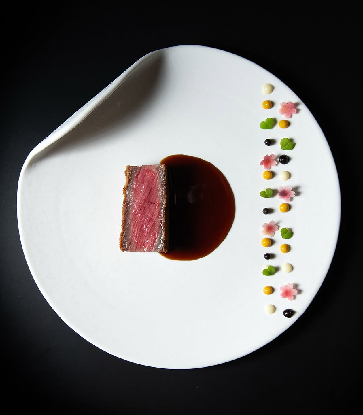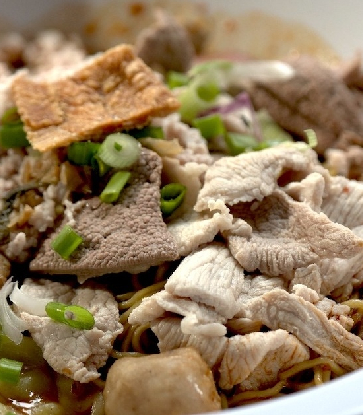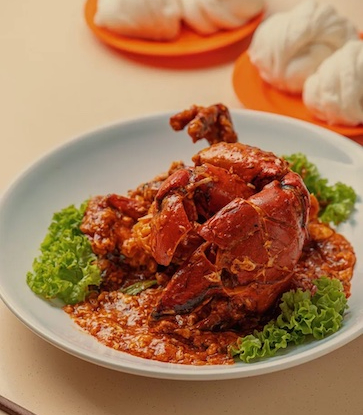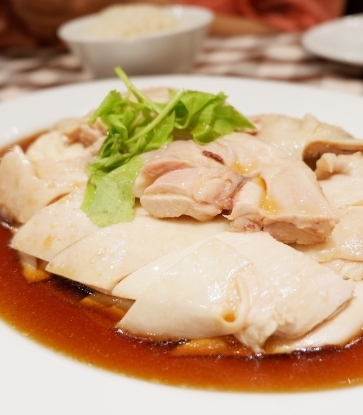In an age of conspicuous consumption, where food choices are legion to satisfy any form of indulgence, there is a growing number of consumers who advocate the “eat less meat” mantra. This entails opting for vegetarian choices and cutting back on meat.
Traditionally, vegetarianism has stemmed from either religious beliefs or health concerns. Today, a new wave of environmentally conscious consumers joins these groups, driven by concerns over the environmental impact of food production and the need to conserve resources. Together, they seek alternative protein sources and nutrients without sacrificing the pleasure of eating.
Singapore’s food scene has always been at the forefront of this healthy eating lifestyle, with currently groundbreaking vegetarian options at places like Bib Gourmand-listed Whole Earth that offers vegetarian Nyonya dishes like plant-based rendang, curries, and asam pedas; and Podi & Poriyal, which showcases South India’s age-old vegetarian cuisine, rooted in a Hindu-Jain-Buddhist tradition that stretches back three millennia.
When it comes to the local hawker food scene, vegetarian stalls can be found in every food centre on the island, and the pescatarian-vegetarian and meatless options available further widen the choices for the average omnivorous food-lover who would like to reduce his or her meat intake. Some vegetarian or meatless hawker food options available include:

Carrot Cake
In Singaporean cuisine, "carrot cake" isn’t the dessert topped with cream cheese that one might expect. Instead, it’s a savoury dish made from steamed rice flour and daikon radish (called “white carrot”) mixed into a soft, flavourful cake that’s cut into pieces and stir-fried with garlic, eggs, and preserved radish.
Served in “white” or “black” versions — the latter coated with sweet dark soy sauce — it’s a local favourite that’s satisfyingly hearty, with a perfect balance of crisp edges and tender bites. As a vegetarian-friendly dish packed with umami, Singaporean carrot cake offers a delicious, comforting alternative to meat dishes while highlighting the creativity of hawker-style cooking.
Singaporean Carrot Cake contains egg, and, sometimes, fish sauce for the seasoning. There are also versions that include shrimp, either dried or fresh.

Chwee Kueh
These are popular Teochew snacks comprising delicate, steamed rice cakes, topped with “chai poh” (chopped preserved radish) cooked in vegetable oil. The rice cakes have the softest, pudding-like texture, where the flavours come from the salty-savoury topping. The result is quite addictive and is popularly enjoyed throughout the day.
Please take note that Chwee Kueh contains dried shrimps.

Popiah
Popiah is a beloved staple in Singaporean hawker cuisine — a fresh, delicate spring roll filled with an assortment of vegetables and flavours. The thin wheat skin encases a juicy mix of julienned turnip, carrots, bean sprouts, lettuce, and often tofu, along with a slather of sweet sauce and a sprinkle of peanuts.
This humble yet vibrant dish is a fantastic vegetarian option for anyone looking to enjoy something light but satisfying. Each bite of popiah delivers a refreshing crunch and an earthy, slightly sweet burst of flavour, making it a delightful choice for those seeking a meat-free meal without compromising on taste.
Popiah may contain meat, depending on the filling. The chilli sauce it comes with also usually contains dried shrimps.

Rojak
Rojak is a juicy, delectable mix of raw, freshly-cut jicama, cucumber, green mango, rose apple, pineapple, and any other type of crunchy fruit or vegetable, all slathered with a sweet, sticky molasses-like sauce that binds all the ingredients together. Generous handfuls of crushed peanuts are tossed into the mix for additional crunch. The rojak sauce consists of fermented soybean paste, dark soy sauce, sugar, and other condiments that give it a salty-sweet, umami lift.
Fermented shrimp paste or “belachan” and chili paste are often added to lend a hodgepodge mix a spicy edge — strict vegetarians or vegans can request the hawker to exclude this during the preparation phase.

Roti Prata
This crisp, flaky South Indian flatbread is made of wheat flour, salt, sugar, either vegetable oil or clarified butter or ghee, and egg. It is suitable for ovo-lacto-vegetarians. Roti prata is often served with sambar, a lightly spiced vegetable-and-lentil curry.

Teochew Kueh
Teochew kueh is a collective term that refers to a selection of traditional stuffed rice cakes with different fillings: soon kueh (shredded jicama), kuchye kueh (chives), and p’ng kueh (glutinous rice), amongst others, including the aforementioned Chwee Kueh. Served straight from the steamer, or further pan-fried to lend a golden-crispness to the skin, Teochew Kueh are delicious with a spicy chilli or sweet hoi sin sauce dip.
Strict vegetarians or vegans should note that most Teochew Kueh places, unless they describe themselves as vegetarian, will incorporate bits of dried shrimps to the fillings for added flavour.

Thosai
Thosai is the ubiquitous South Indian crêpe made from a fermented lentil and rice batter, griddle-cooked, and served with milky-rich coconut chutney, red-hued chilli-spiked kara-chutney, and sambar. Most often served at breakfast, but can be enjoyed throughout the day, the thosai may seem deceptively light, but it is actually quite filling. Having just one in a meal is more than enough.

Vadai
These delicious golden-fried South Indian doughnuts are made of a batter that consists of lentil (urad dal) flour, water, and salt. The vadai gets its flavours from aromatics added to the batter — like cumin seeds, curry leaves, green chillies, onion, ginger, and black pepper.
Deep-fried till crisp on the outside but spongey-soft and moist on the inside, vadai are best-consumed fresh and hot from the deep-fryer. In South Indian restaurants, vadai are served with the usual accompaniments of a South Indian vegetarian breakfast meal: coconut chutneys and sambar.

Soybean Curd (Tau Huay)
The making and consumption of tofu in China dates back over two millennia. Douhua (Chinese: 豆花) is the most delicately soft version of tofu, consumed in savoury form in Northern China but as a dessert in Southern China.
In Southeast Asia, it’s also basically served sweet, due to the influence of the mainly Southern Chinese immigrants. Here in Singapore, “tau huay” is often served with a choice of white or brown sugar syrup.

Cendol
This very popular Javanese dessert has been adopted by Singaporeans, especially the Nonyas (Straits-born or Peranakan Chinese) with gusto. The earliest mention of a cendol-like dessert is in The Epic of Kresnayana, dating back to 1104 during the Kediri kingdom in West Java. The ancient text described green rice jellies served as a drink called “dawet”.
The word “cendol” itself was first mentioned in 1932 in the Malay Concordance Project, a collection of classical Malay texts. “Cendol” is derived from the West Javanese/Sundanese word “jendol”, meaning "swollen", a reference to the green jellies that swell up when soaked in water or liquid. Cendol today is enjoyed as a shaved ice dessert, with green pandan-scented noodles, stewed red beans, coconut milk, and palm sugar.
Hawker food in Singapore has always been renowned for its myriad of offerings and its responsiveness to changing food trends, as well as consumer likes and dislikes. As the environmental vegetarianism trend sets in, there will be a growing number of hawkers offering meatless dining options to the discerning public.
Where to find vegetarian-friendly hawker food in Singapore:
Chey Sua Carrot Cake (Bib Gourmand, MICHELIN Guide Singapore 2024)
Du Du Shou Shi (Bib Gourmand, MICHELIN Guide Singapore 2024)
Jian Bo Tiong Bahru Shui Kueh (Bib Gourmand, MICHELIN Guide Singapore 2024) – contains dried shrimp
Lai Heng Handmade Teochew Kueh (Bib Gourmand, MICHELIN Guide Singapore 204) - some fillings may contain meat
Whole Earth (Bib Gourmand, MICHELIN Guide Singapore 2024)
Ann Chin Handmade Popiah (Selected, MICHELIN Guide Singapore 2024) – filling contains shrimp
Guan Kee Fried Carrot Cake (Selected, MICHELIN Guide Singapore 2024)
Nyonya Chendol (Selected, MICHELIN Guide Singapore 2024)
Podi & Poriyal (Selected, MICHELIN Guide Singapore 2024)
Rojak‧Popiah & Cockle (Selected, MICHELIN Guide Singapore 2024) – dishes may contain traces of seafood
Singapore Famous Rojak (Selected, MICHELIN Guide Singapore 2024) – sauce contains dried shrimp
Tiong Bahru Lien Fa Shui Jing Pau (Selected, MICHELIN Guide Singapore 2024) – filling contains dried shrimp
Toa Payoh 93 Soon Kueh (Selected, MICHELIN Guide Singapore 2024)
Tow Kwar Pop (Selected, MICHELIN Guide Singapore 2024) – sauce contains dried shrimp
Unforgettable Carrot Cake (Selected, MICHELIN Guide Singapore 2024)
Whampoa Soya Bean & Grass Jelly Drinks (Selected, MICHELIN Guide Singapore 2024)
Ye Tang (Selected, MICHELIN Guide Singapore 2024)






















